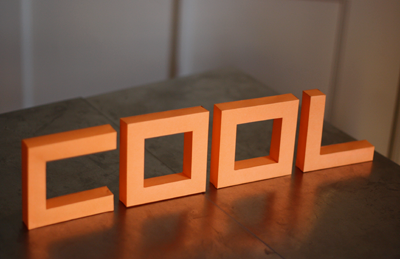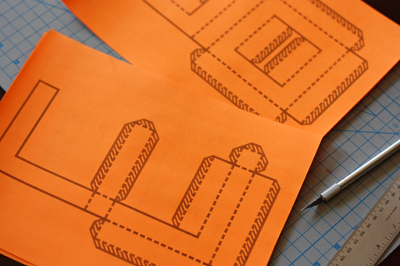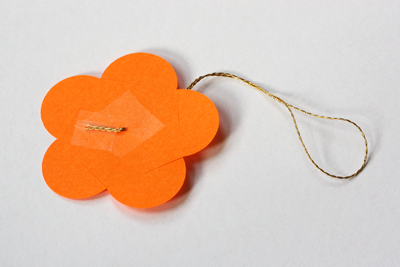with instructions for making embroidered felt balls (see p. 15). So pretty for Christmas ornaments or shade pulls or embellishments on gifts... True, the directions are in Japanese, but I bet you could figure it out using the diagrams for inspiration. If you want to buy plain felted balls,
. Or to make your own, try
.
Note: The original magazine linked back to a Japanese website selling supplies, so the numbers are all references to their thread colors.(top left) Before StartingTo make a Temari ball you will use a felt ball as the foundation. Once you choose a direction for your ball, just like a globe we will call the top point the "North Pole," the bottom the "South Pole," and the center the "Equator."
Diagram - North Pole, Equator, South Pole
(top center) MaterialsWool felt ballsWe will be using three sizes of balls: S, M, and L (a diameter of 1.5, 2.0, or 2.5cm). You can use pre-made balls sold commercially and choose which size of ball you'd like to make.
Temari needleWe recommend using a long needle made specifically for Temari. It is possible to substitute with a No.3 sized embroidery needle.
(top right, under picture of balls)Temari threadUse a cotton thread like "Temari filament," "Temari thread," "metallic", etc. We will use a mix of these and you can choose which thread to use.
(center left) Starting Stitch1) With a ball that is 1cm or larger, make a stitch in the ball, pulling the end of the thread into the ball.
2) Make another stitch, entering the same spot and exiting 1cm or more away.
3) Make another stitch, exiting in the same spot you started.
(bottom right) North and South Poles1) Mark the left and right center of your ball with straight pins. Decide which you want to be your North and South Pole.
2) Make a stitch, exiting at the North Pole.
Diagram - North Pole
(bottom left) Ending stitch1) The spot for the ending stitch
2) Make another stitch, entering the same spot and exiting 1cm or more away.
3) Pull the thread and cut.
--------------------------------------------------------------------------
pg. 15 - How to Make(top left) How to make 5 small Temari ballsCreate Temari charms and hair ties using a mix of traditional embroidery stitches. Use these directions as a reference, choose your colors and stitches, and have fun making original Temari balls.
(center left) A - Divided Into 8 Equal PartsMaterialsFelt ball (M, white)... approximately 2cm diameter
Temari thread... LM1 ("Aurora")
How to Make1) Follow steps 1 and 2 (winding stitch) from ball E. (LM1)
2) Exit at the equator and wind once around the ball.
3) Wrap again, four more times, as shown in the drawing.
4) Following the diagram, make a straight stitch in these 6 places to secure.
Diagram 1) North Pole, Temari thread LM1
2) North Pole, South Pole
3) North Pole, South Pole
4) Straight stitch, Temari thread LM1, back center
(bottom left) B - Lazy Daisy StitchMaterialsFelt ball (M, white)... approximately 2cm diameter
Temari filament... No. 822
Temari thread... LM1 ("Aurora")
How to Make1) Follow the directions from ball E to make the winding stitch. Wrap twice from the top to form a cross, then wrap once around the equator. (LM1)
2) Make the Lazy Daisy stitch around the circumference of the ball. (No. 822) (each intersection is the center of a daisy)
3) Make a French Knot at each of the 6 intersections. (LM1)
Diagram 1) North Pole, Temari thread LM1, South Pole
2) Lazy Daisy stitch, Temari filament No. 822
3) French Knot, Temari thread LM1, Back center
(bottom right) D - Straight StitchMaterialsFelt ball (S, white)... approximately 1.5cm diameter
Temari filament... No. 807, 852
How to MakeChoose the placement and straight stitch in two colors.
(No. 807: 3 locations, No. 852: 2 locations)
DiagramStraight Stitch, Temari filament No. 807, 852
--------------------------------------------------------------------------
pg. 16(top left) C - ChrysanthemumMaterialsFelt ball (L, white)... approximately 2.5cm diameter
Temari filament... No. 810, 812, 843
Metallic gold
How to Make1) Follow steps 1 and 2 (winding stitch) from ball E. (metallic)
2) Wrap once around the equator (No. 812) and exit at upper left.
3) Do the Plover stitch around the North Pole and South Pole. Check pg. 18 for a diagram of the bird's eye view for reference. (No. 810, 812)
4) Cross-stitch around the equator at the intersections. (No. 843)
Diagram1) North Pole, Metallic gold
2) North Pole, South Pole
3) Temari filament No. 812, Plover stitch, Temari filament No. 810
4) Cross-stitch, Temari filament No. 843
(center left) E - Wrapping Stitch and Plover StitchMaterialsFelt ball (L, white)... approximately 2.5cm diameter
Temari filament... No. 807, 821, 851, 857
How to Make
1) Mark the North and South Poles with a straight pin. Wrap a thread from the North Pole, over the Equator, past the South Pole, back over the Equator, and return to the North Pole. Wrap around the ball again so that you form a cross. (No. 851)
2) With a new color, wrap twice from the same point, forming a new cross at a 45 degree angle. (No. 821)
3) Wrap around the Equator 4 times. (No. 807) *Do not leave a gap between the threads.
4) Use the Plover stitch on top of the other 3 threads. (No. 857)
5) Use the Pine Needle stitch around the North and South Poles. (No. 807)
Diagram1) North Pole, Temari filament No. 851
2) Temari filament No. 851, North Pole, No. 821
3) North Pole, Temari filament No. 807 4 wraps, South Pole
4) Plover stitch, Temari filament No. 857
5) Pine Needle stitch, Temari filament No. 807, North Pole
(Bottom right gives directions on wrapping beads)
(pg. 17 shows how to use the Temari balls as charms & hair accessories)--------------------------------------------------------------------------
pg. 18 - How to StitchDirections for Temari stitches
(top row of three)Cross Stitch
Straight Stitch
Plover Stitch (a type of bird)
1 out, 2 in, 3 out, 4 in, 5 out
*Repeat 1 through 4
(second row of three)
Lazy Daisy Stitch
French Knot
Pine Needle Stitch
1 out, 2 in, 3 out, 4 in, 5 out, 6 in, 7 out, 8 in, 9 out, 10 in
(right side)
Chrysanthemum, bird's eye view
1 out, 2 in, 3 out, 4 in, 5 out, 6 in, 7 out, 8 in, 9 out, 10 in, 11 out, 12 in, 13 out, 14 in, 15 out, 16 in
*Centered on the North or South Pole
(below the dotted line are patterns for the cloth items in the magazine)
 Ooo, shiny. My entire home dec line for The Needle Shop now comes in a laminated version. Look at these makeup bags made by Rachel Epperson, the shop's owner. And how about this plump little boxy pouch?
Ooo, shiny. My entire home dec line for The Needle Shop now comes in a laminated version. Look at these makeup bags made by Rachel Epperson, the shop's owner. And how about this plump little boxy pouch?  This stuff is perfect for wipeable placemats, seat covers, play mats, and designer Slip 'N Slides. If you need a Christmas present for a sewist, consider a laminated fat quarter bundle and a copy of Sewing With Oilcloth.
This stuff is perfect for wipeable placemats, seat covers, play mats, and designer Slip 'N Slides. If you need a Christmas present for a sewist, consider a laminated fat quarter bundle and a copy of Sewing With Oilcloth. Where can you get your hands on some yardage or goods made from Outside Oslo? Some options for you:
Where can you get your hands on some yardage or goods made from Outside Oslo? Some options for you:





















































